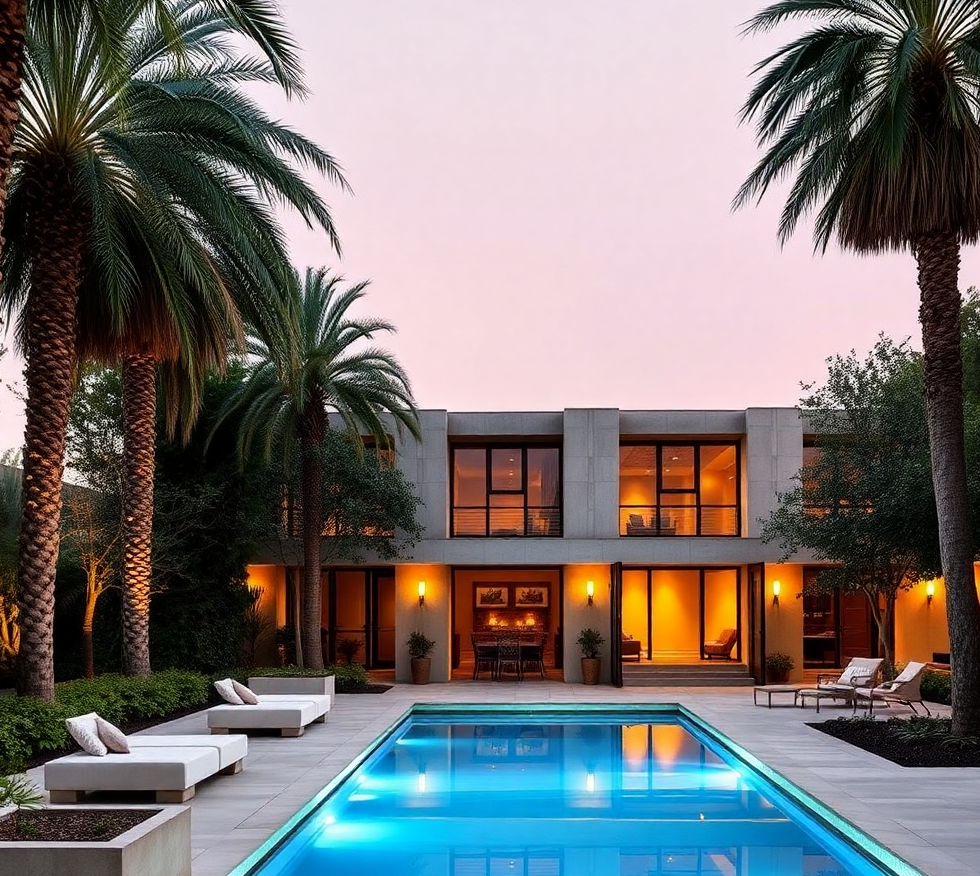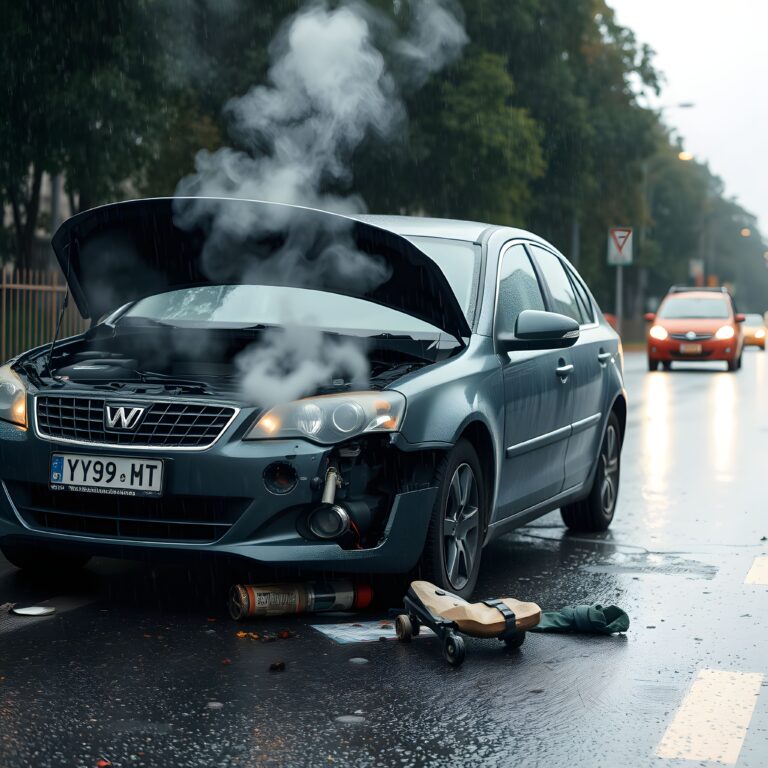Los Angeles has long been a hub for innovation in architecture and design, renowned for its diverse and bold structures. From the iconic mid-century modern homes of the 1950s to the sleek, modernist skyscrapers that populate its skyline today, LA’s architectural legacy is celebrated worldwide. However, as wildfires become an ever-growing threat, the city’s treasured buildings and landmarks face the very real danger of destruction. The problem is compounded by the growing urban-wildland interface, where urban sprawl increasingly encroaches on fire-prone areas, leaving both modern and historic buildings vulnerable.
Sam Lubell, an architecture critic known for his in-depth analysis of design and urban issues, has raised alarms about the wildfire threat to LA’s architectural heritage. Lubell underscores how wildfires threaten more than just homes – they endanger the city’s cultural and historical identity. In this article, we explore how wildfires have impacted Los Angeles’ architectural landmarks, the significance of these buildings, and the ongoing efforts to preserve them.
The Growing Threat of Wildfires in LA
California has long faced wildfire risks, but recent years have seen an alarming increase in both the frequency and intensity of fires. The summers of 2025 have already witnessed catastrophic wildfires threatening several iconic sites across Los Angeles. The rise in wildfire threats can be attributed to a complex combination of factors, including climate change, prolonged droughts, and the expansion of urban areas into traditionally fire-prone wildlands.
The frequency of wildfires has drastically increased in recent decades, with each year bringing more frequent and intense fires. Record-breaking temperatures, low humidity, and dry conditions have created a perfect storm for the spread of fires. In 2025, California saw several major fires that decimated large portions of the state. These fires not only affect residents but also endanger valuable historical and cultural sites.
Climate change has been a key contributor to this uptick in fires. The rising global temperatures and the intensifying effects of climate change, such as prolonged dry seasons and increased heat waves, make California more susceptible to larger, more devastating wildfires. As the temperature continues to rise, it makes the dry forests and grasslands of California more volatile. High winds further exacerbate the danger by pushing flames rapidly through dry vegetation.
Moreover, the encroachment of urban neighborhoods into rural, fire-prone areas adds fuel to the fire. LA’s rapid expansion has increased the number of residential areas in close proximity to wooded and mountainous terrain, putting more homes and cultural landmarks in harm’s way. This urban sprawl has made the city’s famous landmarks, such as modernist homes and historic estates, more vulnerable.
While LA has made efforts to combat fires and mitigate their impact, these measures often fall short, and the speed with which fires spread makes it difficult for emergency services to act in time. In some cases, historical buildings and homes are reduced to ash within a matter of hours, with little opportunity for protection.
Iconic Landmarks at Risk
Los Angeles is home to some of the most iconic and culturally significant architectural sites in the world. These buildings tell the story of LA’s evolution as a center of modernism, creativity, and culture. However, these treasures are at increasing risk from wildfires. Several high-profile buildings and landmarks, beloved by locals and tourists alike, face the threat of destruction in the wake of these devastating fires.
- Will Rogers State Historic Park
Located in the Pacific Palisades, Will Rogers State Historic Park is a key landmark that represents the beginnings of California’s celebrity culture. Will Rogers, a beloved humorist and actor, built his ranch home here in 1926, and the site became a symbol of LA’s unique mix of entertainment, nature, and architecture. The park and its historic home, designed by architect Walter F. Young, became one of the most iconic spots in the city.
The design of the ranch house is an excellent example of California’s early 20th-century rustic architecture. With materials drawn from the local environment, such as wood, stone, and adobe, the house blends seamlessly into the natural landscape. Over the years, the ranch house has served as a museum and educational center, offering insight into the life and legacy of Will Rogers and the history of early Hollywood.
However, in recent years, the site has faced growing danger as fires in the surrounding Palisades area have increasingly threatened to engulf the park. Although firefighting efforts have been underway to protect the site, its proximity to fire-prone areas means that future fires could pose an even greater risk. The loss of Will Rogers State Historic Park would be devastating for both Angelenos and visitors from around the world, marking the destruction of a key part of the city’s heritage.
- Ray Kappe’s Keeler House
The Keeler House, designed by the influential architect Ray Kappe in 1991, exemplifies the ideals of modernist architecture. Situated in the Pacific Palisades, this home is a quintessential example of how modern design can seamlessly integrate with the environment. Kappe’s innovative use of steel and wood framing creates large, open spaces that allow residents to live in harmony with nature. The house is tucked into the hillside, offering breathtaking views of the surrounding area and the Pacific Ocean.
While the house is a masterpiece of modernist design, its location has made it vulnerable to the spread of fires. The Pacific Palisades area is one of the most fire-prone in Los Angeles, and the Keeler House, with its expansive glass windows and wooden frame, could be at risk of total destruction if a wildfire were to break out nearby. The loss of this home would be a devastating blow to the preservation of Ray Kappe’s work and modernist architecture in Los Angeles.
The Keeler House represents a key period in architectural history, showcasing Kappe’s innovative design philosophies. For many architecture enthusiasts and professionals, the destruction of this home would be a loss not just for LA but for the broader architectural community.
- Topanga Ranch Motel
Built in 1929, the Topanga Ranch Motel was a unique architectural gem that combined rustic charm with the popular bungalow-style accommodations of the early 20th century. The design of the motel reflects the Spanish Colonial Revival and Mediterranean Revival styles, both of which were prevalent in Southern California at the time. Situated in Topanga Canyon, the Topanga Ranch Motel became a favorite stop for visitors to LA, particularly those seeking a tranquil retreat away from the city.
Unfortunately, the motel’s location in Topanga Canyon has made it vulnerable to wildfires. In recent years, fires have come dangerously close to the motel, and preservationists have feared the worst. The destruction of the Topanga Ranch Motel would be a tremendous loss to Los Angeles’ architectural history, as it is one of the few remaining examples of early California tourist accommodations.
- Eames House (Case Study House No. 8)
The Eames House, also known as Case Study House No. 8, is perhaps one of the most iconic examples of mid-century modern architecture in the world. Designed by Charles and Ray Eames in 1949, the house became an emblem of modernism and has been featured in countless design books and exhibits. The house was a part of the Case Study House Program, which sought to create affordable, well-designed homes for post-war America.
The Eames House is a fusion of steel, glass, and wood, with a minimalist design that emphasizes function over form. The home was designed to reflect the ideals of modernism, integrating with its environment and creating a harmonious living space. Because of its significance, the Eames House has become a pilgrimage site for architecture enthusiasts, design students, and tourists alike.
However, due to its location in the Palisades, the Eames House is constantly at risk from fires. In 2025, the house was in close proximity to the Pacific Palisades Fire, which forced evacuation efforts. The structure is highly vulnerable to wildfires, with its wood and steel framing making it susceptible to rapid burning. While efforts have been made to protect the house, the risk remains significant.
The Cultural and Human Cost of Loss
The impact of these fires goes beyond just the loss of property. For Los Angeles, these buildings represent a vital link to the city’s past, its cultural identity, and its status as a global leader in architectural design. The destruction of such iconic sites would leave an irreparable hole in the city’s historical fabric, diminishing its standing as a center for creativity and innovation.
For local residents, these buildings are not just places of historical interest; they are part of the fabric of everyday life. Many Angelenos grew up visiting these sites, seeing them as symbols of their city’s distinctive character. To lose them would be to lose a part of the shared experience that defines life in Los Angeles.
Furthermore, for architects, designers, and preservationists, these buildings represent the culmination of years of work and vision. Their destruction is not only a loss for those directly involved with the buildings but also for future generations who will not have the opportunity to experience them firsthand. It also signals a broader cultural shift where modern design and historical preservation are increasingly seen as expendable in the face of environmental challenges.
Efforts to Mitigate the Damage
Given the ongoing threat of wildfires, efforts to protect these invaluable buildings and sites are crucial. Several initiatives are underway to mitigate the damage and ensure that Los Angeles’ architectural treasures are preserved for future generations.
- Fire-Proofing and Retrofitting
One of the primary steps toward protecting buildings from fire is fire-proofing. This includes installing fire-resistant materials, such as tempered glass, fire-resistant roofing, and non-combustible exterior materials. Retrofitting buildings with these materials ensures that even if a fire reaches the property, the structure is more likely to withstand the flames.
- Public Awareness Campaigns
In addition to technical solutions, public awareness campaigns are being launched to help local residents and businesses understand the importance of preserving architectural landmarks. These campaigns encourage residents to support policies that promote fire resilience and push for regulations that prevent urban sprawl into fire-prone areas.
- Governmental Action and Funding
Governmental bodies are also investing in measures to prevent fires from spreading. The allocation of funds for fire prevention and mitigation programs, including better forest management and controlled burns, is a vital part of the ongoing efforts to protect both communities and cultural landmarks.
- Community Involvement and Preservation Initiatives
Local communities and preservation organizations are becoming more involved in efforts to protect historic buildings. In Los Angeles, preservation groups are advocating for the designation of certain areas as fire-safe zones and are working with city officials to enact more stringent regulations around building in high-risk areas. These efforts have been instrumental in raising awareness about the importance of preserving the city’s architectural heritage.
The impact of wildfires on LA’s architectural legacy is an ongoing concern, with the threat of future fires potentially leading to the destruction of irreplaceable buildings. From iconic mid-century modern homes to historic landmarks, LA’s architectural landscape is at risk. As climate change continues to exacerbate the wildfire threat, efforts to protect these sites must be ramped up, with a focus on fire-proofing, public awareness, and governmental support. While these efforts may not eliminate the threat entirely, they represent the first line of defense against the devastation that wildfires can cause. Preserving LA’s architectural treasures is essential, not only for its residents but for the cultural legacy of the city as a whole.
Feel free to check out our other website at : https://scoremaxed.com/













